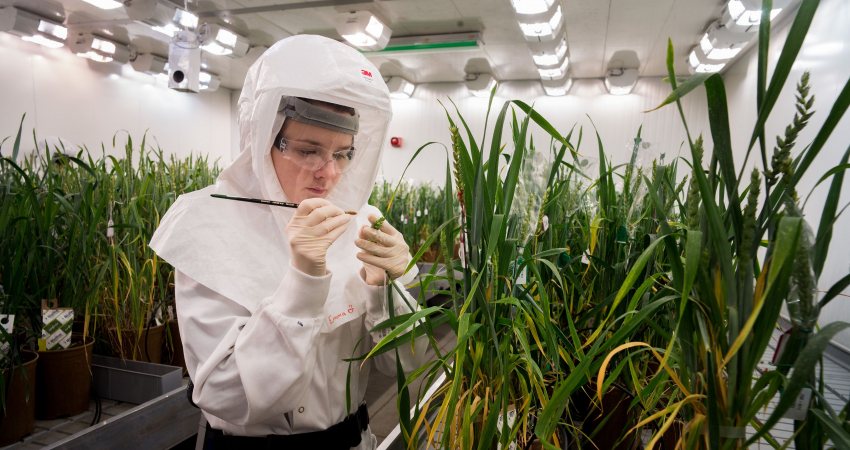Frequently asked questions

In plant breeding, the breeder selects plants with specific, desirable, characteristics. This results in plants and crops being retained that are e.g. very productive or are drought-resistant.
Genome editing involves deliberately and specifically altering the DNA of an organism in a laboratory. DNA is the hereditary material of an organism. The DNA contains genes, which are pieces of DNA that together determine what an organism looks like and how it functions.
This report is about genome editing.
The new genome-editing techniques offer different possibilities for altering DNA. They can, for example:
- add genes to, or remove genes from the DNA of a plant;
- change one single building block (‘letter’) of a gene; and
- switch genes on and off, without changing the DNA code itself.
The process of genome editing in plants and crops is a technological process in which DNA is altered in a laboratory. However, the end products can resemble traditionally-bred plants and crops. It is possible, but not necessary that foreign DNA is present in the end product.
CRISPR-Cas9 is one of the genome-editing technologies.
CRISPR-Cas9 is like a pair of scissors which can cut DNA. The cell will subsequently repair the DNA itself. During the repair process, genes can be added to the DNA in the laboratory. These can be genes from the same or from a different species. It is also possible to change just one single building block of a gene in this process – one of the four ‘letters’ A, C, T, or G.
With the discovery of these ‘scissors’, gene modification in the laboratory became faster, easier, more accurate, and less expensive.
The CRISPR-Cas9 technology has caused a revolution in laboratories. This technology is expected to play a leading role in innovations right across the field of biotechnology:
- in industrial applications;
- in plants and crops;
- in animals; and
- in humans.
In this study, we examined the influence of the new genome-editing technology on the societal and political debate about genetic modification in plants and crops.
This debate mainly addresses the question whether the new genome-editing techniques should be regulated in the same way as older genetic modification techniques. Some stakeholders describe this regulation as ‘strict, expensive and time-consuming’.
The European Court of Justice clarified in July 2018 that all crops modified using CRISPR-Cas9 are subject to the GMO legislation. However, the ruling did not end the discussion, as the European Commission could amend the legislation.
In this report, the Rathenau Instituut discusses the consequences of the various policy options for regulating the new genome-editing techniques in plant breeding. It shows that a modernisation of the biotechnology policy for plants and crops is helped by a differentiated risk policy that also considers broader societal and ethical factors.
Advocates of a reduction in rules governing the use of these techniques, point to possible solutions the applications can offer to the food crisis or the energy transition. The economic competitiveness of the EU is also an argument used in favour of exempting genome editing.
Opponents of deregulation, who want legislation to remain unchanged, have concerns about long-term safety, including food safety, and believe that commercial interests are dominating the agenda.
It is important to have the debate, because the Dutch government recently announced that it would promote having new plant-breeding techniques exempted from the GMO Directive in Europe (if the product no longer contains any foreign DNA). This would provide space for innovation.
However, this policy option has three drawbacks.
- First, supervision and monitoring of the safety of genome-edited plants and crops is still desirable. This is in accordance with the ruling of the European Court of Justice. Genome-editing techniques are in development and possible opportunities and risks in the long and short term are to a great extent still unknown.
- Second, there is no room within this policy option to consider broader societal factors. This fails to acknowledge the fact that the decision-making process in Europe relating to GMO cultivation has been laborious, precisely because for a long time (until 2015), national areas of concern – in other words, broader societal issues – were excluded from decision-making about market authorisation.
- Third, these crops would then be exempted from labelling, which means that producers and consumers no longer have any freedom of choice.
It is important to develop a policy that promotes innovation, while at the same time provides space for societal, cultural and ethical issues.
